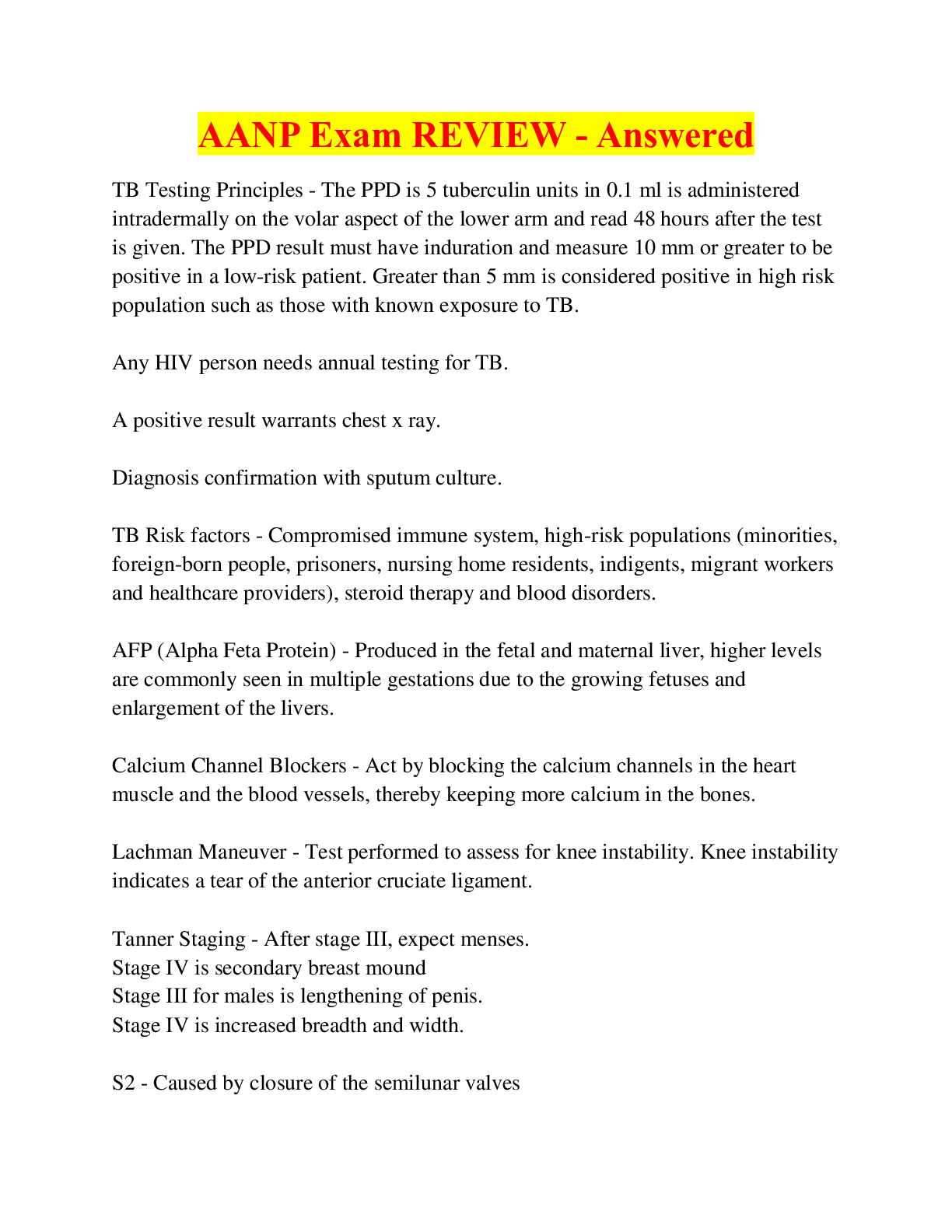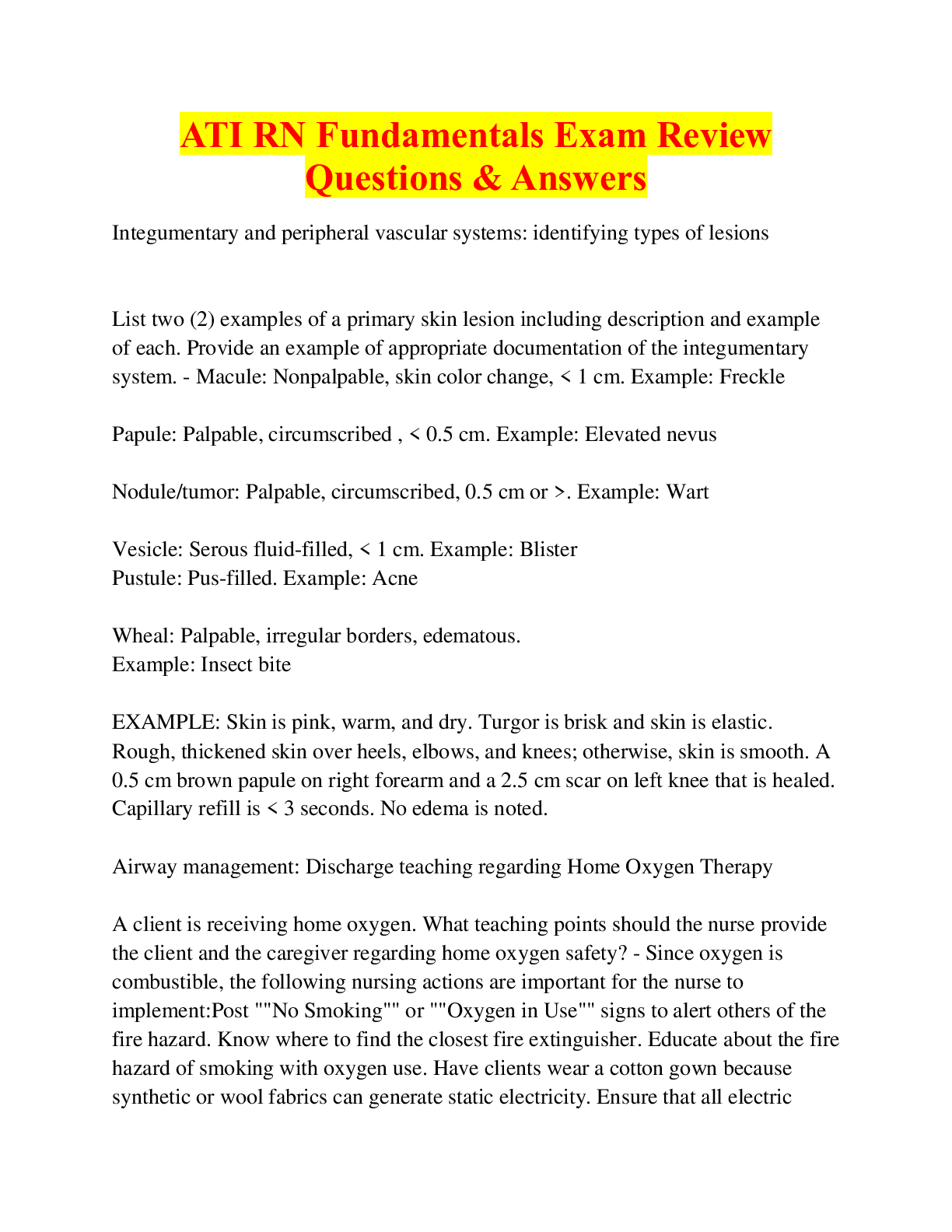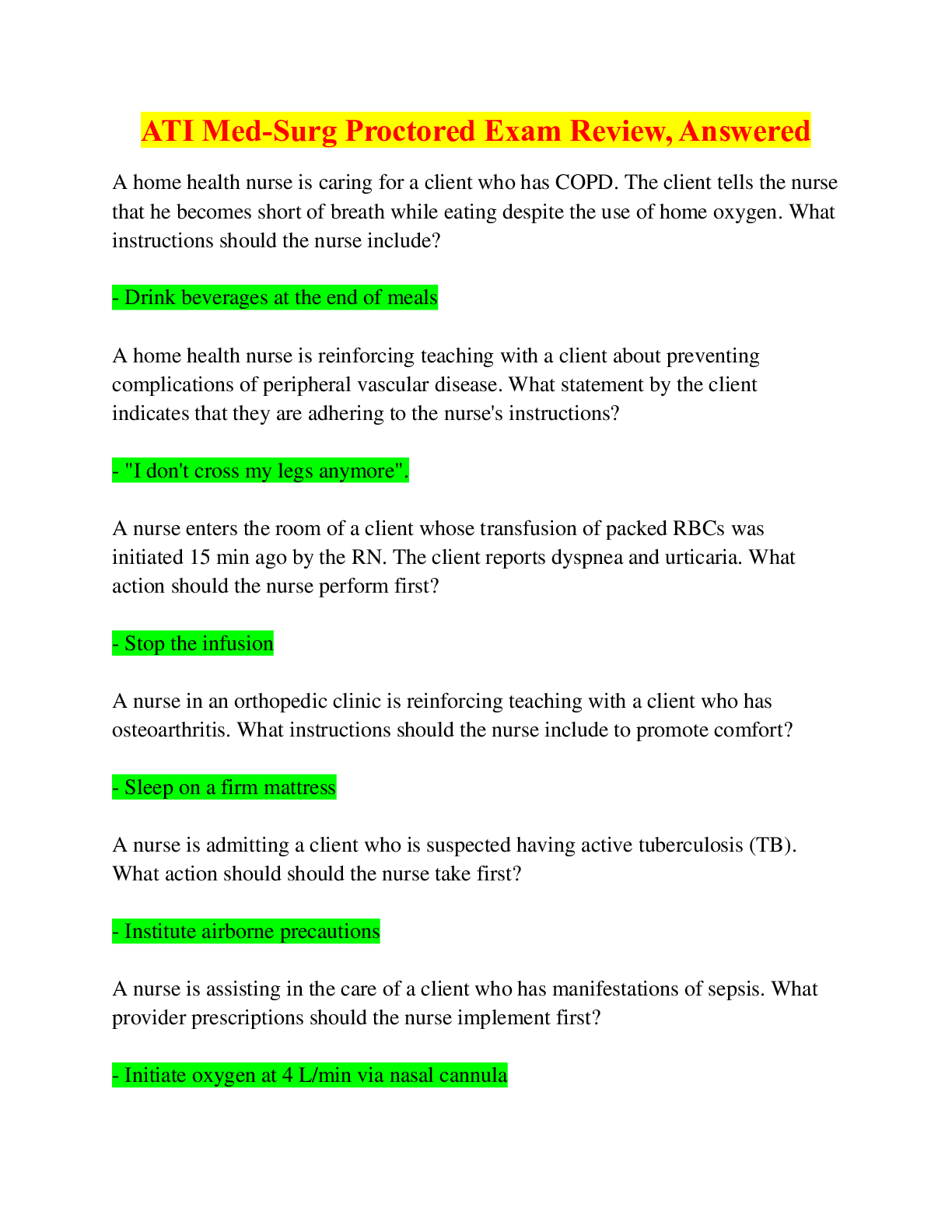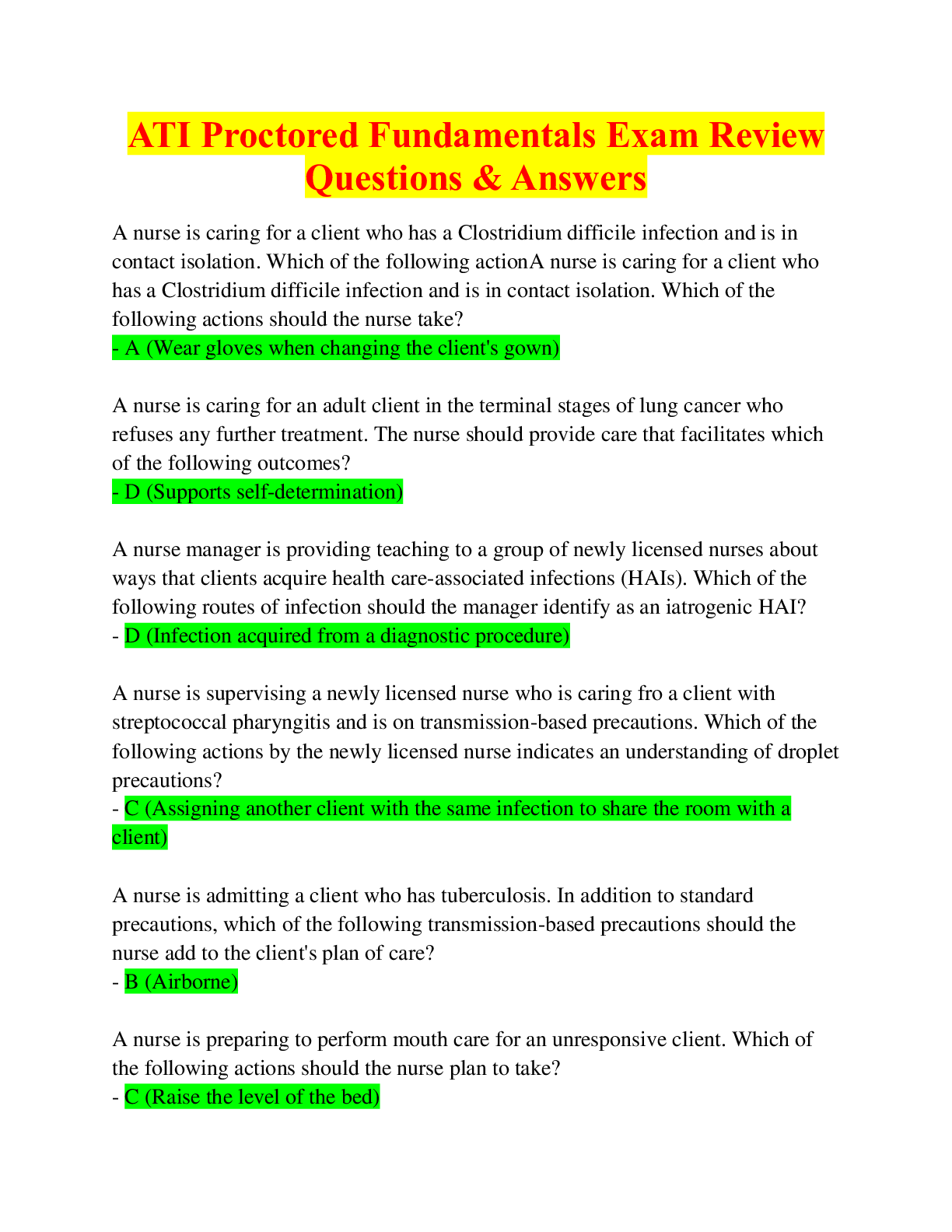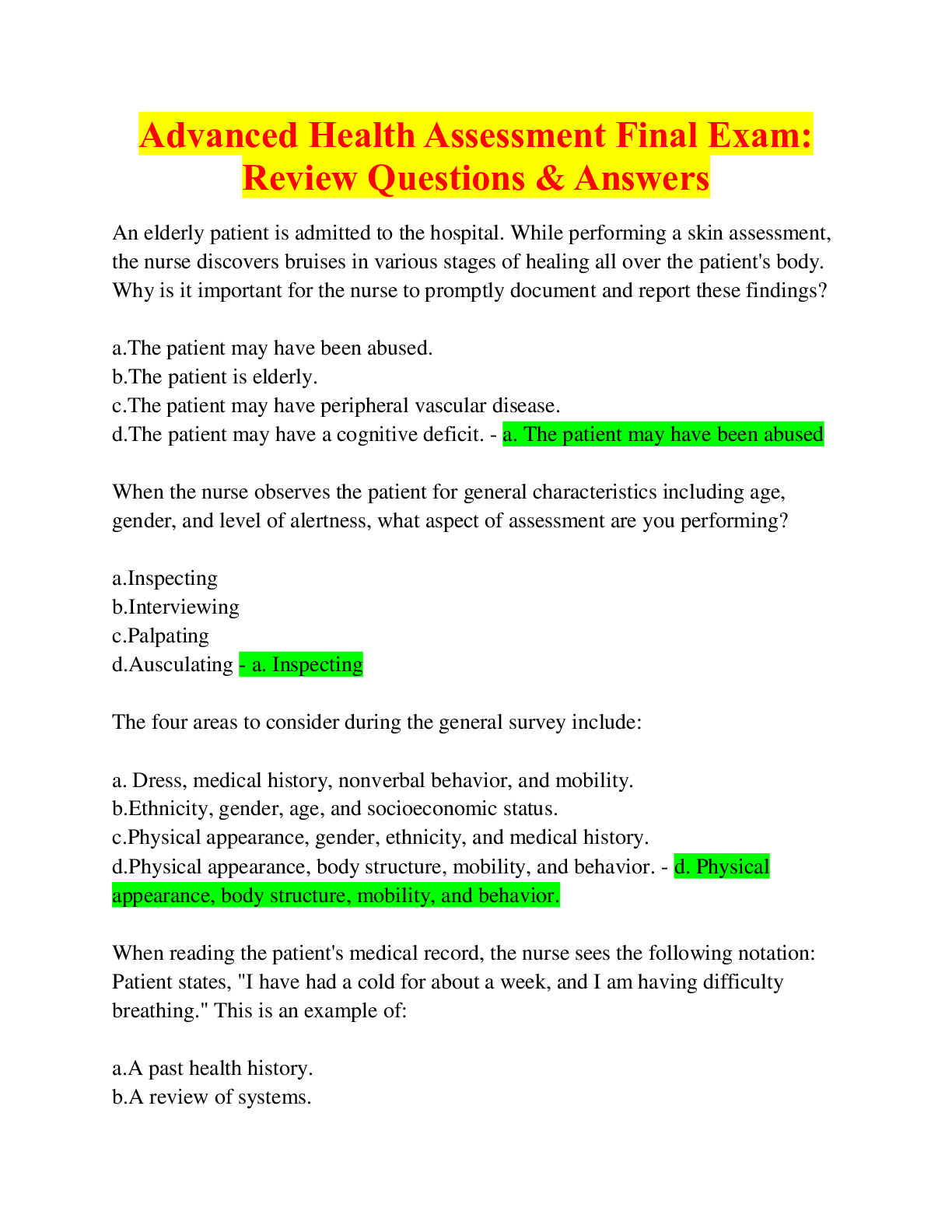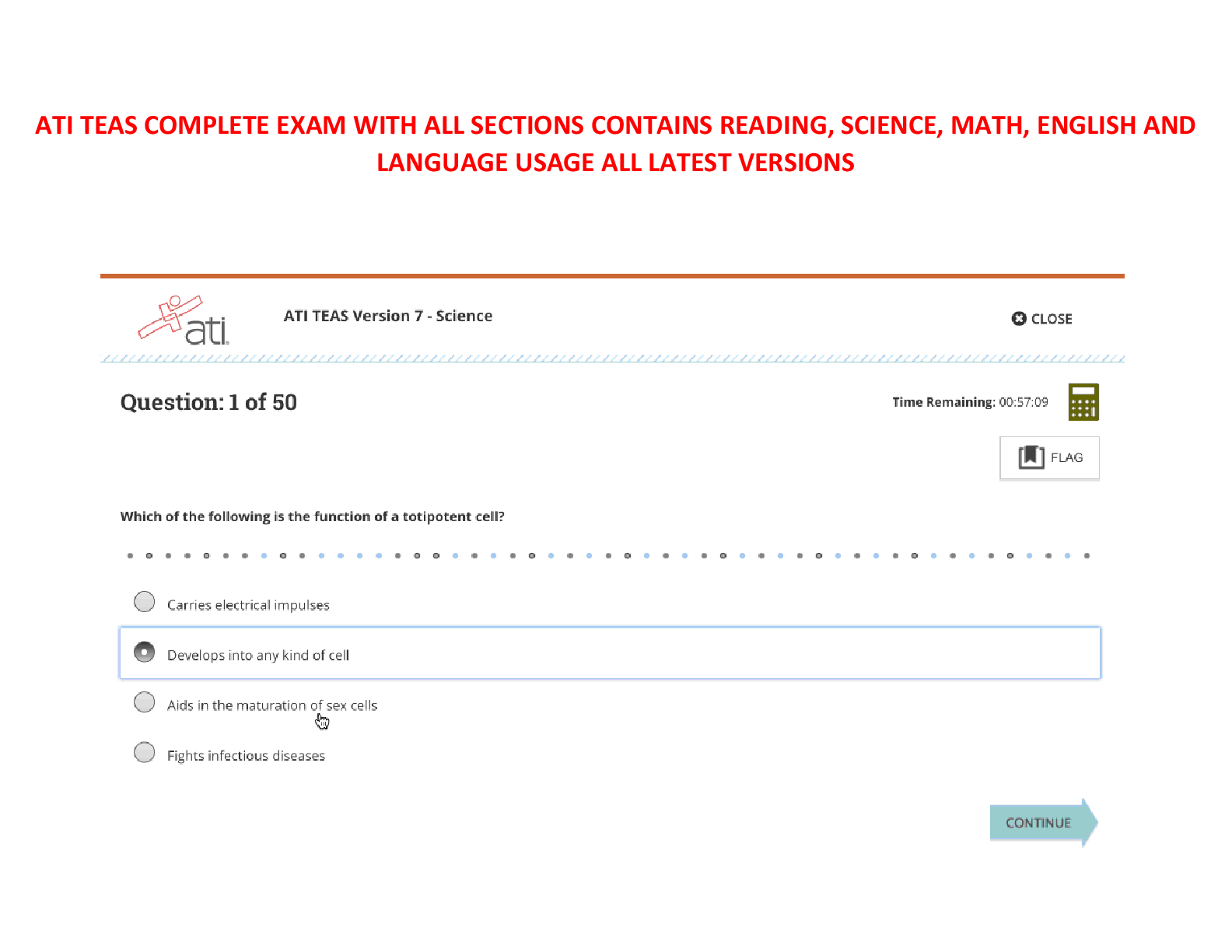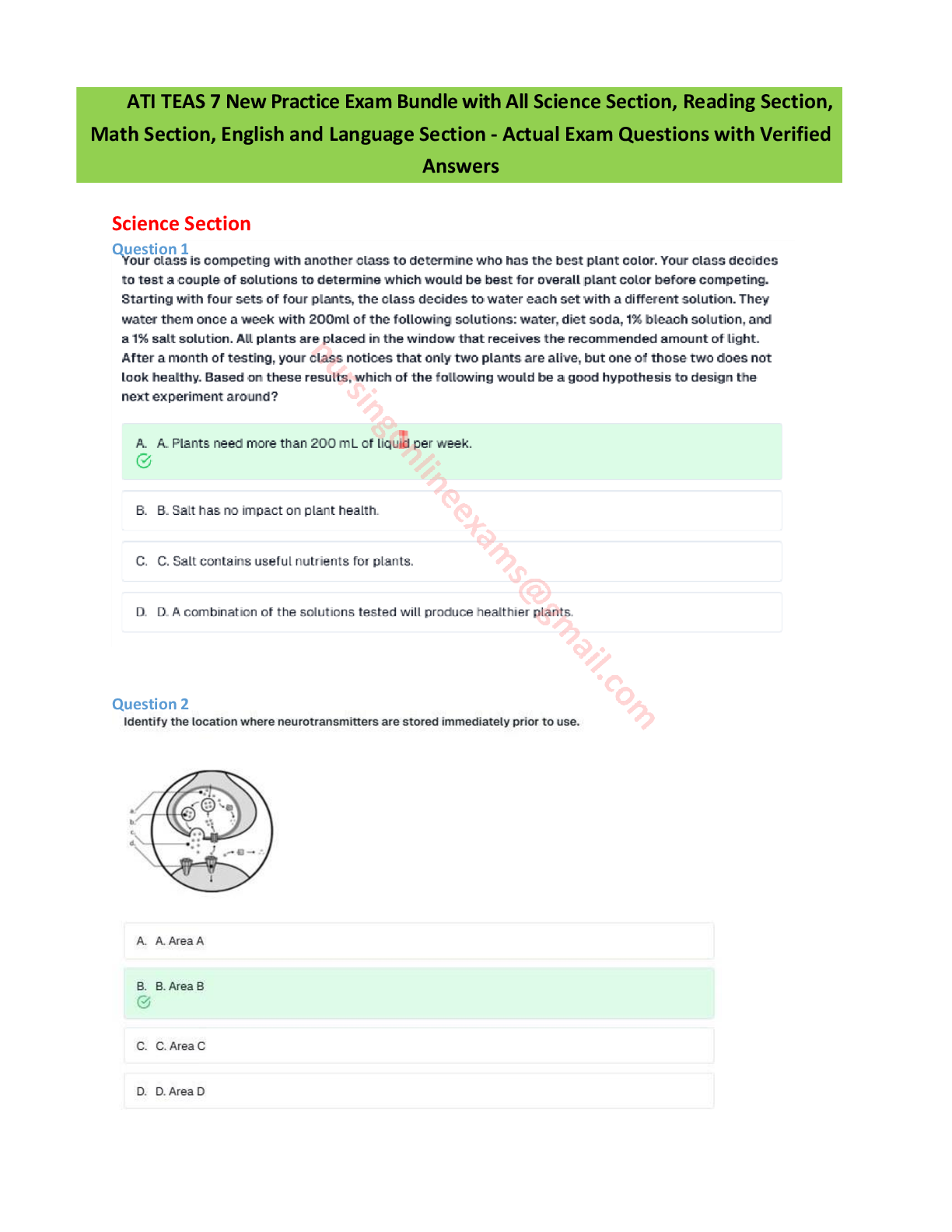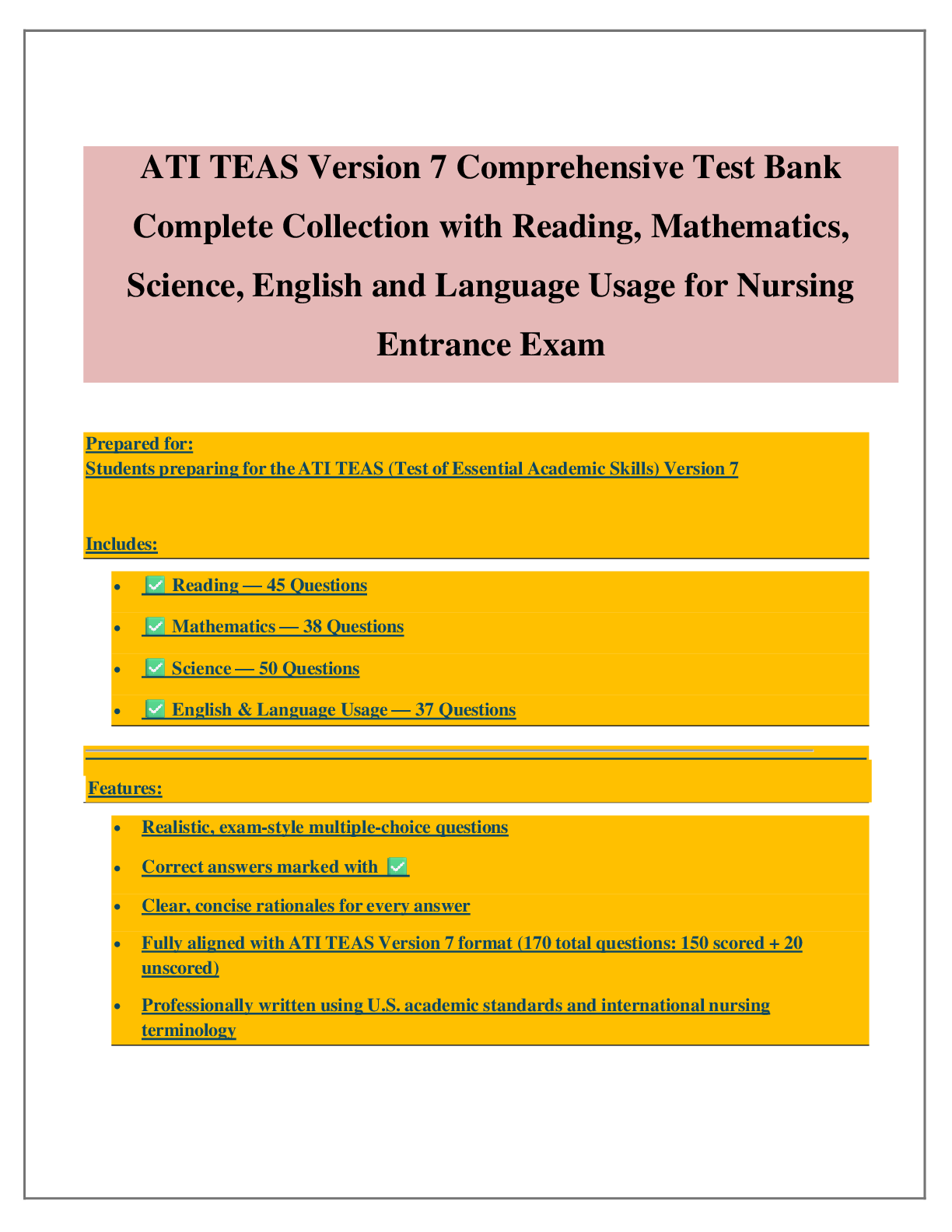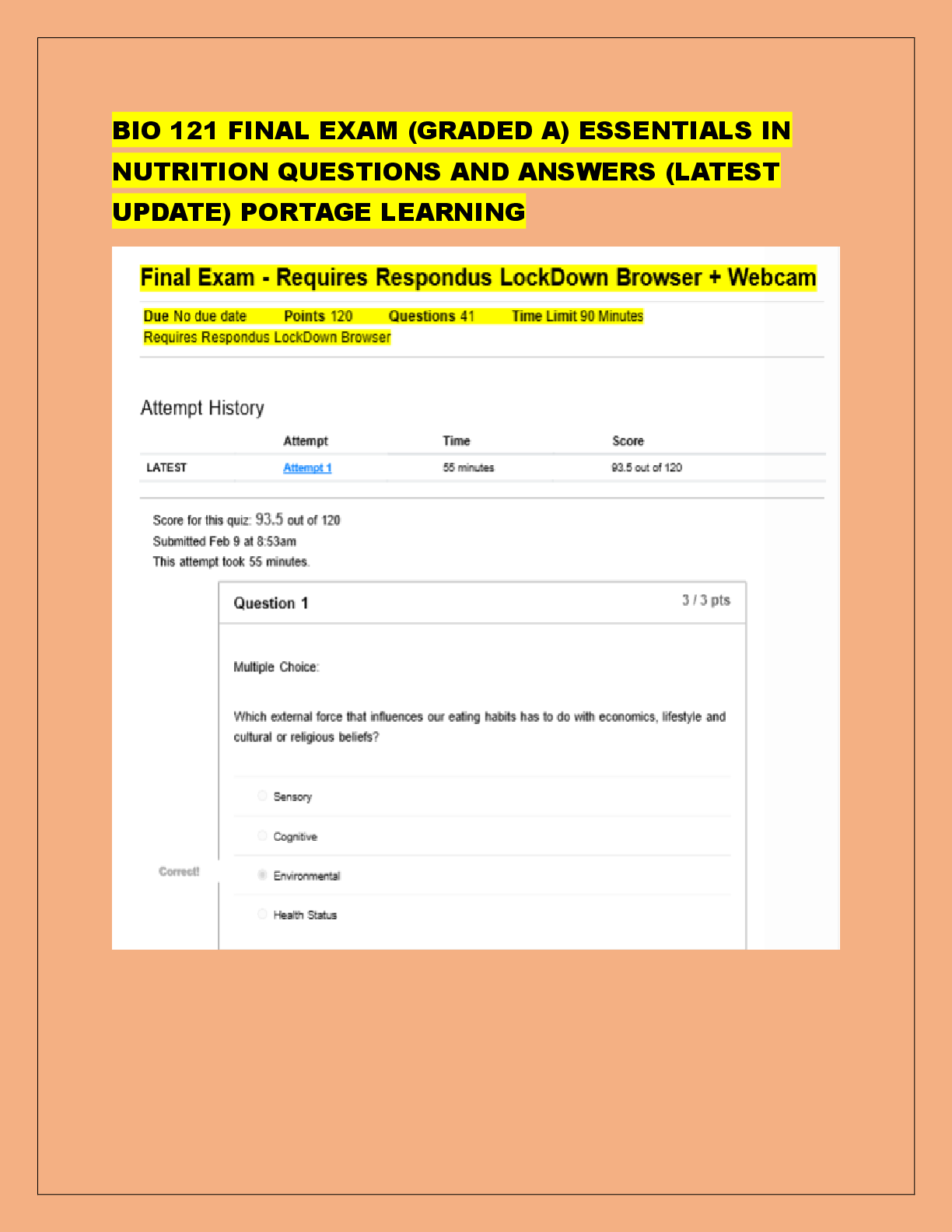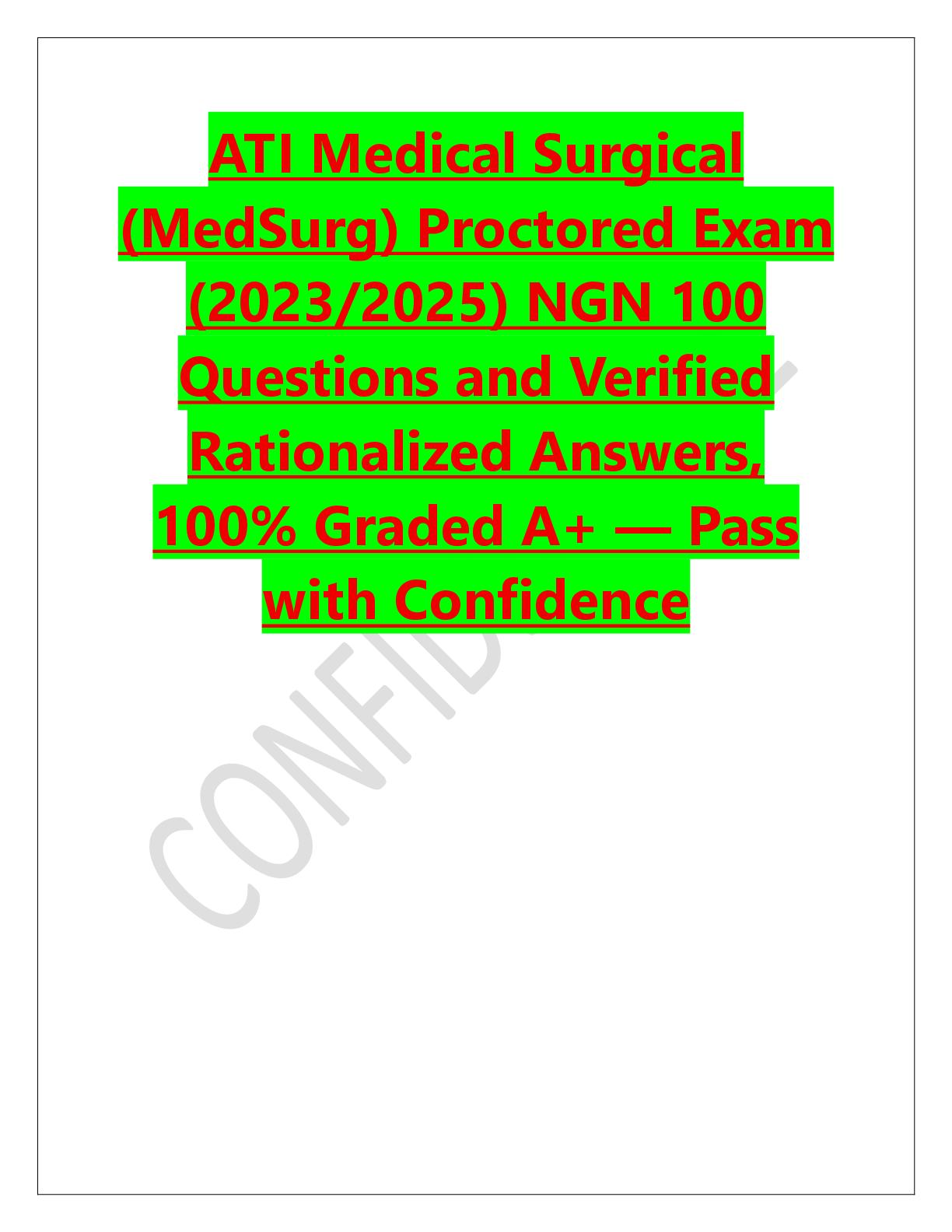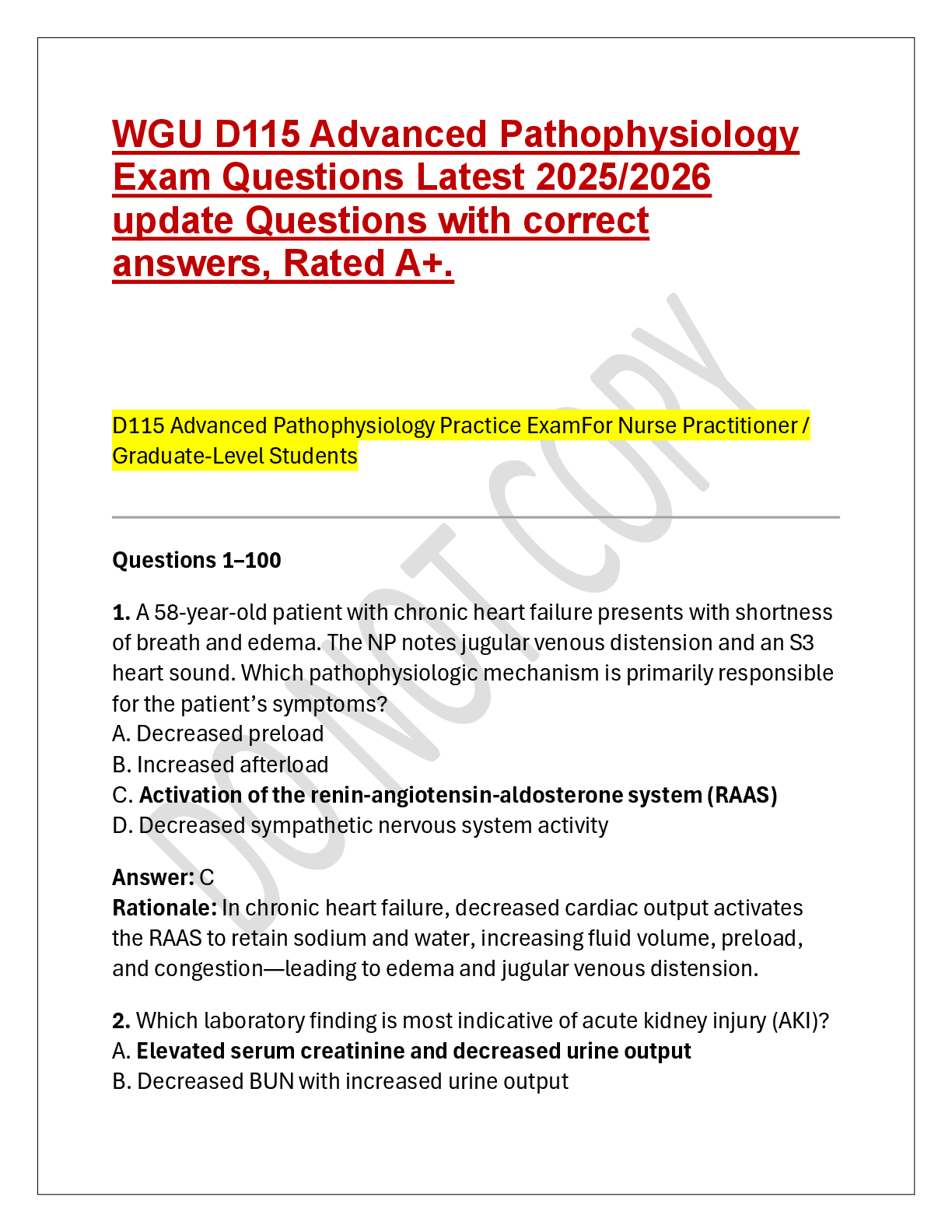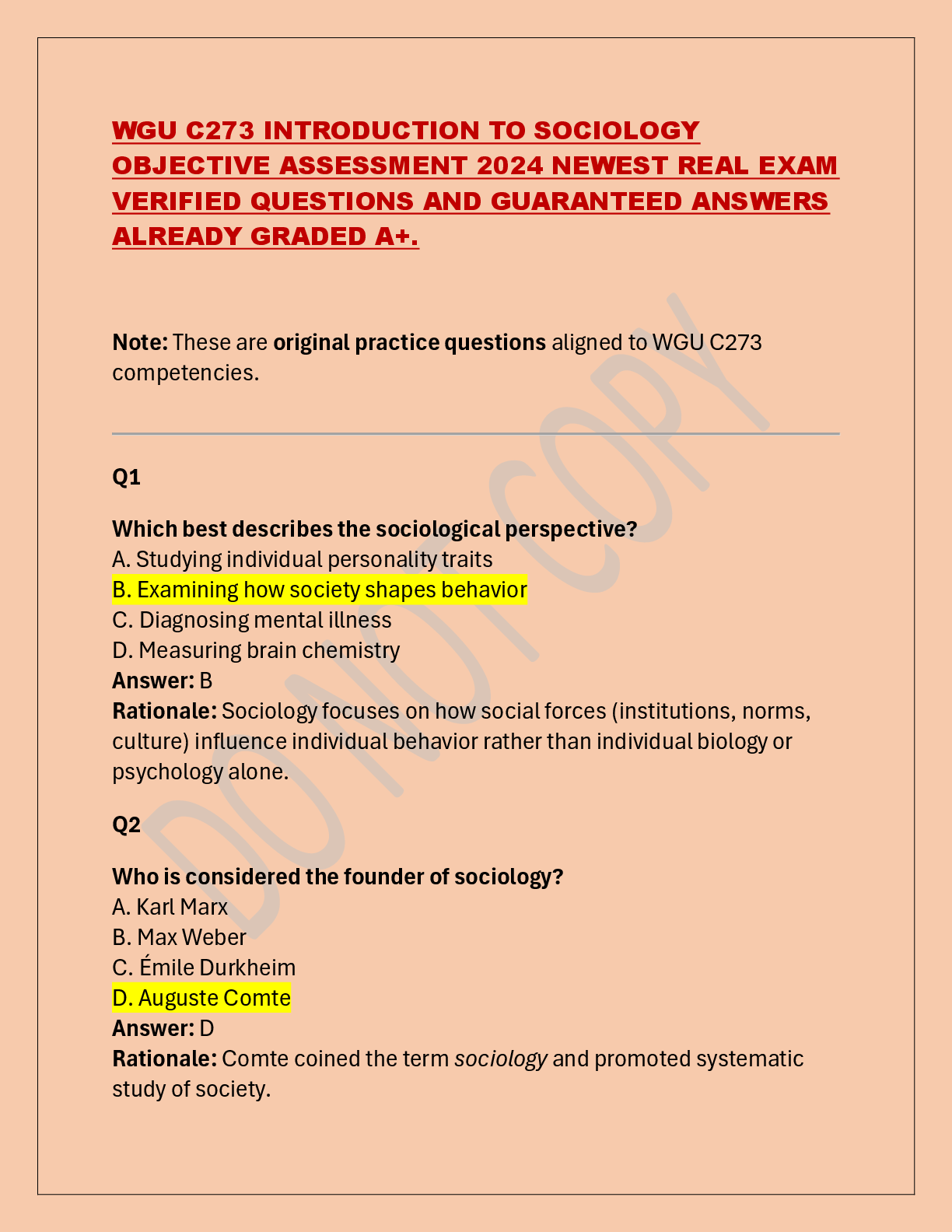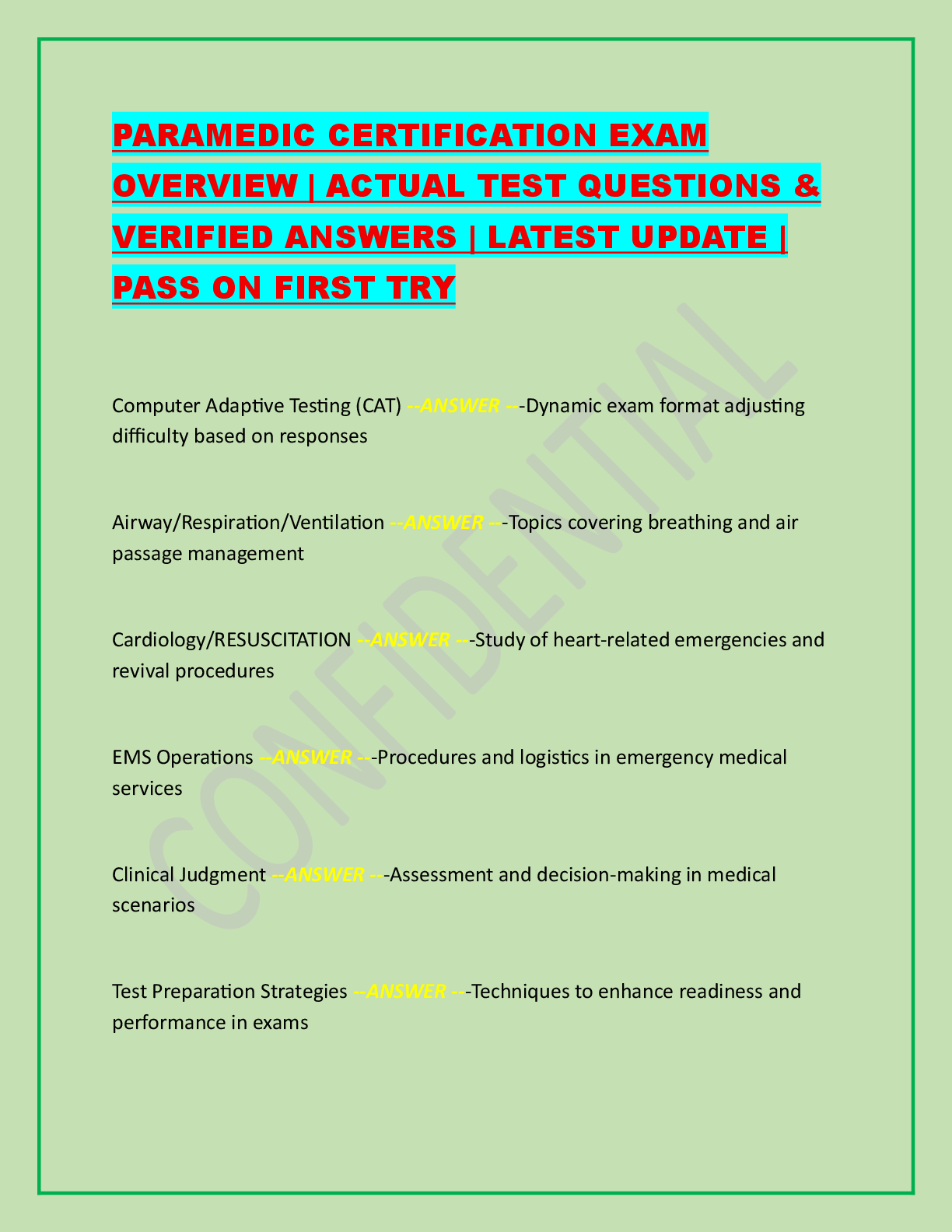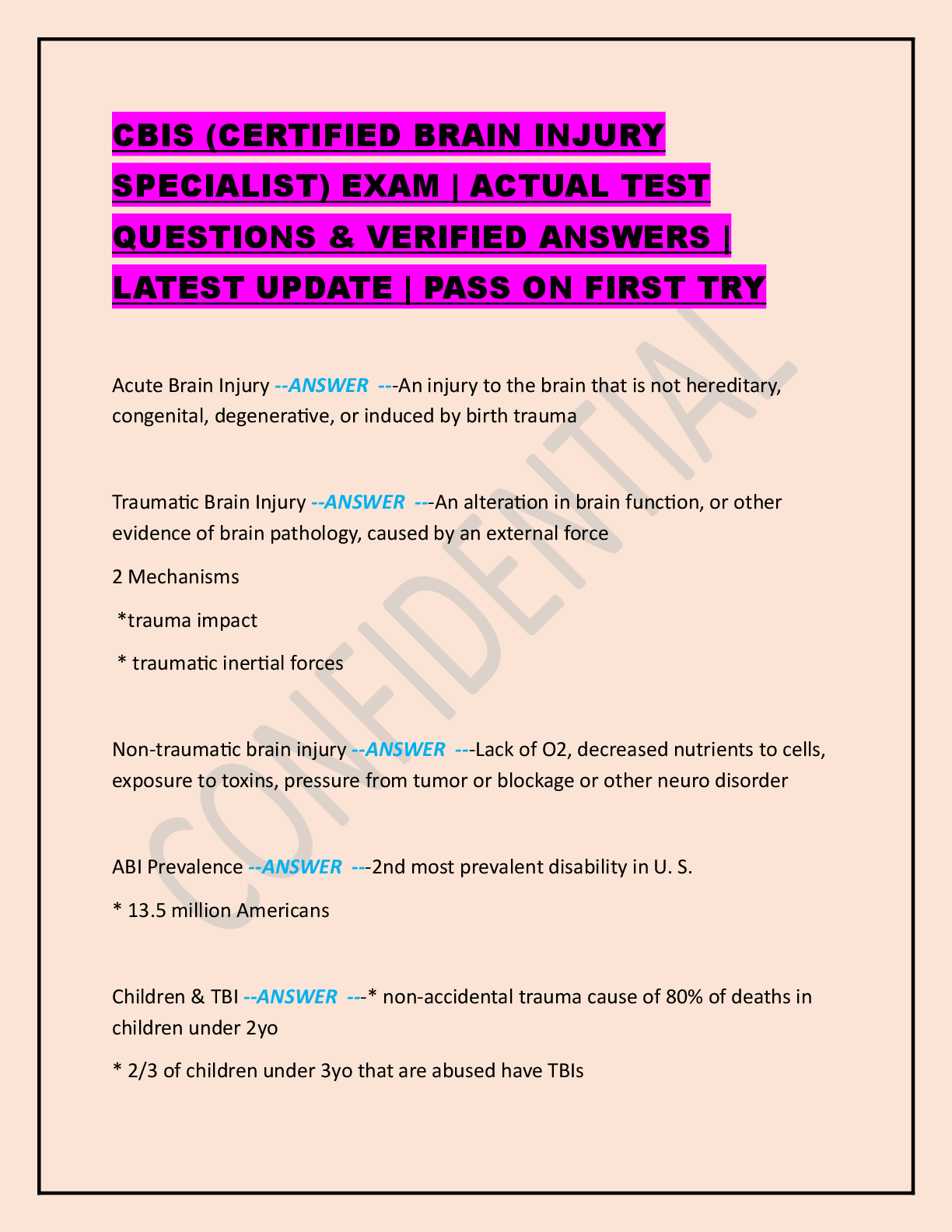*NURSING > EXAM REVIEW > Cardiac Exam Review Questions & Answers (All)
Cardiac Exam Review Questions & Answers
Document Content and Description Below
Cardiac Exam Review Questions & Answers-The health care provider (HCP) has written a prescription for a client to have an echocardiogram. Which action should the nurse take to prepare the client for t ... he procedure? Answers: a. Tells the client that the procedure is painless and takes 30 to 60 minutes b. Has the client sign an informed consent form for an invasive procedure c. Questions the client about allergies to iodine or shellfish d. Keeps the client on nothing by mouth (NPO) status for 2 hours before the procedure - Answer: a. Tells the client that the procedure is painless and takes 30 to 60 minutes. Rationale: Echocardiography is a noninvasive, risk-free, pain-free test that involves no special preparation. It commonly is done at the bedside or on an outpatient basis. The client must lie quietly for 30 to 60 minutes while the procedure is being performed. It is important to provide adequate information to eliminate unnecessary worry on the part of the client. Cardiac monitoring leads are placed on a client who is at risk for premature ventricular contractions (PVCs). Which heart rhythm will the nurse anticipate in this client if PVCs are occurring? Answers: a. Inverted P waves before the QRS complexes b. A P wave preceding every QRS complex c. QRS complexes that are short and narrow d. Premature beats followed by a compensatory pause - Answer: d. Premature beats followed by a compensatory pause Rationale: PVCs are abnormal ectopic beats originating in the ventricles. They are characterized by an absence of P waves, the presence of wide and bizarre QRS complexes, and a compensatory pause that follows the ectopy. A client is wearing a continuous cardiac monitor, which begins to sound its alarm. The nurse sees no electrocardiographic complexes on the screen. Which is the priority nursing action? Answers: a. Call a code. b. Call the health care provider. c. Check the client's status and lead placement. d. Press the recorder button on the electrocardiogram console. - Answer: c. Check the client's status and lead placement. Rationale: Sudden loss of electrocardiographic complexes indicates ventricular asystole or possibly electrode displacement. Accurate assessment of the client and equipment is necessary to determine the cause and identify the appropriate intervention. The remaining options are secondary to client assessment. A client with myocardial infarction (MI) has been transferred from the coronary care unit (CCU) to the general medical unit. What activity level should the nurse encourage for the client immediately after transfer? Answers: a. Ad lib activities as tolerated b. Bathroom privileges and self-care activities c. Strict bed rest for 24 hours after transfer d. Unsupervised hallway ambulation for distances up to 200 feet (60 meters) - Answer: b. Bathroom privileges and self-care activities Rationale: On transfer from CCU to an intermediate care or general medical unit, the client is allowed self-care activities and bathroom privileges. Activities ad lib as tolerated is premature at this time and potentially harmful for this client. It is unnecessary and possibly harmful to limit the client to bed rest. The client should ambulate with supervision in the hall for brief distances, with the distances being gradually increased to 50, 100, and 200 feet (15, 30 and 60 meters). A client admitted to the hospital with chest pain and a history of type 2 diabetes mellitus is scheduled for cardiac catheterization. Which medication would need to be withheld for 24 hours before the procedure and for 48 hours after the procedure? Answers: a. Glipizide b. Metformin c. Repaglinide d. Regular insulin - Answer: b. Metformin A client who has begun taking betaxolol demonstrates an effective response to the medication as indicated by which nursing assessment finding? Answers: a. Increase in edema to 3+ b. Decrease in blood pressure from 142/94 mm Hg to 128/82 mm Hg c. Weight gain of 5 pounds d. Decrease in pulse rate from 74 beats/min to 58 beats/min - Answer: b. Decrease in blood pressure from 142/94 mm Hg to 128/82 mm Hg Rationale: Betaxolol is a beta-adrenergic blocking agent used to lower blood pressure, relieve angina, or decrease the occurrence of dysrhythmias. Side and adverse effects include bradycardia and signs and symptoms of heart failure, such as increased edema and weight gain. The nurse who is auscultating a 56-year-old client's apical heart rate before administering digoxin notes that the heart rate is 52 beats/min. The nurse should make which interpretation of this information? Answers: a. Normal, as a result of the effects of digoxin b. Normal, because this is the reason the client is receiving digoxin c. Normal, because of the client's age d. Abnormal, requiring further assessment - Answer: d. Abnormal, requiring further assessment Rationale: The normal heart rate is 60 to 100 beats/min in an adult. On auscultating a heart rate that is less than 60 beats/min, the nurse would not administer the digoxin and would report the finding to the health care provider for further instruction. The remaining options are incorrect interpretations because the heart rate of 52 beats/min is not normal. The nurse is caring for a client with a diagnosis of myocardial infarction (MI) and is assisting the client in completing the diet menu. Which beverage should the nurse instruct the client to select from the menu? Answers: a. Coffee b. Raspberry juice c. Cola d. Tea - Answer: b. Raspberry juice Rationale: A client with a diagnosis of MI should not consume caffeinated beverages. Caffeinated products can produce a vasoconstrictive effect, leading to further cardiac ischemia. Coffee, tea, and cola all contain caffeine and need to be avoided in the client with MI. The nurse is preparing discharge instructions for a client with Raynaud's disease. The nurse should plan to provide which instruction to the client? Answers: a. Use nail polish to protect the nail beds from injury. b. Wear gloves for all activities involving the use of both hands. c. Always wear warm clothing, even in warm climates, to prevent vasoconstriction. d. Stop smoking because it causes cutaneous blood vessel spasm. - Answer: d. Stop smoking because it causes cutaneous blood vessel spasm. Rationale: Raynaud's disease is peripheral vascular disease characterized by abnormal vasoconstriction in the extremities. Smoking cessation is one of the most important lifestyle changes that the client must make. The nurse should emphasize the effects of tobacco on the blood vessels and the principles involved in stopping smoking. The nurse needs to provide information to the client about smoking cessation programs available in the community. It is not necessary to wear gloves for all activities, nor should warm clothing be worn in warm climates. The nurse is assessing a client's legs for the presence of edema. The nurse notes that the client has mild pitting with slight indentation and no perceptible swelling of the leg. How should the nurse define and document this finding? Answers: a. 3+ edema b. 4+ edema c. 2+ edema d. 1+ edema - Answer: d. 1+ edema Rationale: Edema is accumulation of fluid in the intercellular spaces and is not normally present. To check for edema, the nurse would imprint his or her thumbs firmly against the ankle malleolus or the tibia. Normally, the skin surface stays smooth. If the pressure leaves a dent in the skin, pitting edema is present. Its presence is graded on the following 4-point scale: 1+, mild pitting, slight indentation, no perceptible swelling of the leg; 2+, moderate pitting, indentation subsides rapidly; 3+, deep pitting, indentation remains for a short time, leg looks swollen; 4+, very deep pitting, indentation lasts a long time, leg is very swollen. [Show More]
Last updated: 2 years ago
Preview 1 out of 21 pages
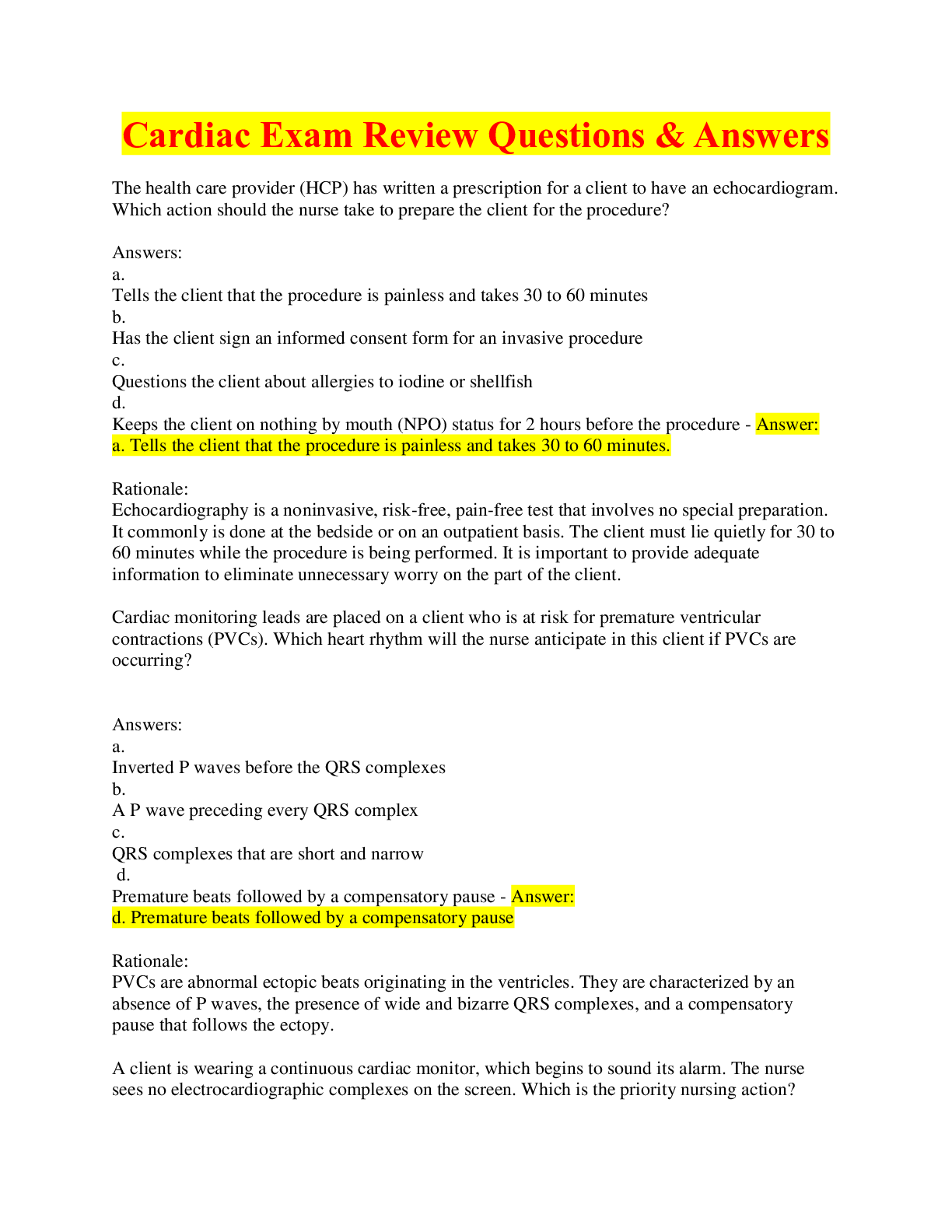
Buy this document to get the full access instantly
Instant Download Access after purchase
Buy NowInstant download
We Accept:

Reviews( 0 )
$13.50
Can't find what you want? Try our AI powered Search
Document information
Connected school, study & course
About the document
Uploaded On
Nov 29, 2023
Number of pages
21
Written in
All
Additional information
This document has been written for:
Uploaded
Nov 29, 2023
Downloads
0
Views
70


